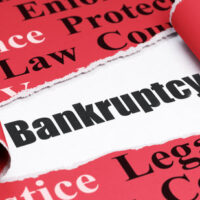Lien Stripping in Bankruptcy: Removing Judgment Liens from Your Property

For many individuals facing financial distress, the burden of judgment liens attached to their property can feel like an insurmountable obstacle to regaining financial stability. Fortunately, bankruptcy offers a legal pathway known as “lien stripping” that can potentially remove these liens, providing much-needed relief. At Wadhwani & Shanfeld, we understand the complexities surrounding lien stripping and are committed to guiding our clients through this process. Contact our Los Angeles bankruptcy attorneys to explore how bankruptcy can be used to remove judgment liens from your property.
A judgment lien is a legal claim on your property resulting from a court’s decision in a lawsuit against you. Creditors can attach these liens to your assets, including your home, as a means to secure payment of a debt. These liens can hinder your ability to sell or refinance your property, making it crucial to address them when seeking financial relief.
Bankruptcy not only provides a fresh start by discharging certain debts but also offers mechanisms to deal with secured debts and liens. Lien stripping specifically refers to the process of removing junior liens from secured debt, making it particularly relevant in cases where the property’s value is less than the amount owed on senior liens.
The Process of Lien Stripping
The process of lien stripping involves several steps:
- Valuation of Property: The property must be appraised to determine its current market value. This appraisal is crucial in establishing whether the lien is wholly unsecured.
- Filing a Motion: The debtor, through their bankruptcy attorney, must file a motion in the bankruptcy court to strip the lien. This motion should include evidence of the property’s value and the amounts owed on senior liens.
- Court Approval: The bankruptcy court will review the motion and, if the criteria are met, can approve the lien stripping. Creditors have the opportunity to object, necessitating a hearing to resolve any disputes.
Considerations and Limitations
While lien stripping can offer significant relief, there are important considerations and limitations to keep in mind:
- Impact on Credit: The process of filing for bankruptcy and stripping liens can affect your credit score. However, for many debtors, the long-term financial relief outweighs the temporary impact on credit.
- Legal Complexity: Lien stripping involves legal procedures that require thorough documentation and evidence. Working with an experienced bankruptcy attorney is essential to successfully navigating this process.
Contact Wadhwani & Shanfeld
Lien stripping in bankruptcy offers a viable solution for individuals burdened by judgment liens on their property. By understanding the eligibility criteria and engaging in the proper legal process, debtors can potentially remove these liens, clearing a path toward financial recovery.
At Wadhwani & Shanfeld, we specialize in helping our clients explore all available options for debt relief, including lien stripping in bankruptcy. If you’re struggling with judgment liens and considering bankruptcy, we’re here to provide the expertise and support you need to regain control of your financial future.
Sources:
abi.org/feed-item/lien-stripping-in-bankruptcy
taxnotes.com/research/federal/irs-private-rulings/litigation-guideline-memorandums/lien-stripping-in-chapter-13-bankruptcy-cases/1fxv9
